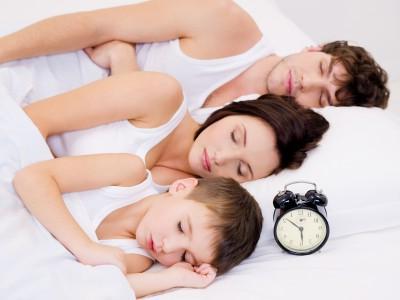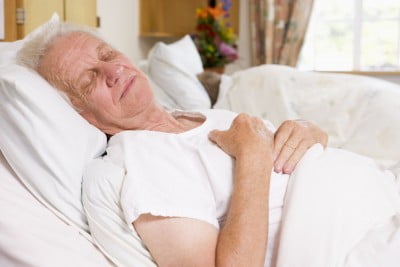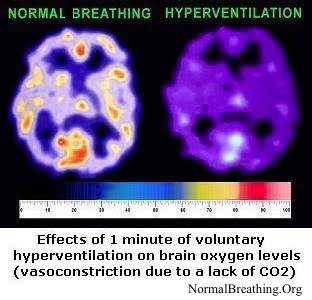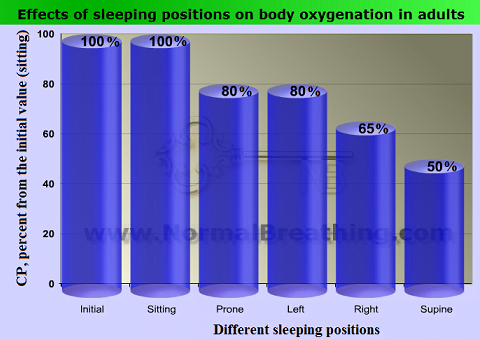How to Position Babys Head When They Sleep


- Updated on September 11, 2020
Grammarly-Daan-okt-2019
Proofread by Samson Hui Proofreader on July **, 2019
![]() By Dr. Artour Rakhimov, Alternative Health Educator and Author
By Dr. Artour Rakhimov, Alternative Health Educator and Author
- Medically Reviewed by Naziliya Rakhimova, MD
Research on Best Sleep Positions: Prone, Supine, Left, Right, or Sit
Warning. Most natural (and often medical) websites claim that the human body repairs itself during sleep. However, dozens of medical studies, as well as clinical observations, testify that sick people are most likely to die from 4 to 7 am due to heart attacks, strokes, seizures, exacerbations of asthma and COPD, and many other conditions (see the summary of these studies here: Sleep Heavy Breathing Effect). It is also true that over 90% of people have the lowest body-oxygen levels during early morning hours. Therefore, do not get fooled by those people who advise you to sleep more and feel better about sleep. Your health will get worse and worse if your body oxygen drops during sleep.
 While most internet sources, including official medical websites, recommend supine sleep as the best sleep position, medical evidence (26 published clinical studies) revealed that supine sleep was the worst position for the following conditions:
While most internet sources, including official medical websites, recommend supine sleep as the best sleep position, medical evidence (26 published clinical studies) revealed that supine sleep was the worst position for the following conditions:
– Asthma (Ballard et al, 1991)
– Asthma and allergies in wheezing children (Ponsonby et al, 2004)
– Asthma (nocturnal) (D'Alonzo & Ciccolella, 1996)
– Back pain in pregnancy (Fast & Hertz, 1992)*
– Bruxism and swallowing (Miyawaki et al, 2003)
– Bruxism, clenching episodes and gastroesophageal reflux (Miyawaki et al, 2004)
– Chronic respiratory insufficiency patients (Ambrogio et al, 2009)
– Cough (nocturnal) and coughing attacks (Bonnet et al, 1995)
– GERD (gastroesophageal reflux disease) (Khoury et al, 1999; Wang et al, 1999)
– Geriatric inpatients (Hjalmarsen & Hykkerud, 2008)*
– Heart failure patients with central sleep apnea/Cheyne-Stokes (irregular) respiration (Joho et al, 2010; Szollosi et al, 2006*)
– Irregular or periodic breathing (Hudgel et al, 1993)
– Pregnancy (Trakada et al, 2003)*
– Sleep apnea (Ingman et al, 2004; Yoshida, 2000; Matsuzawa et al, 1995; Miura e tal, 1992; Kavey et al, 1985)
– Sleep paralysis and terrifying hallucinations (Kompanje, 2008; Cheyne, 2002)
– Snoring, hypopneas, and apneas (Jan et al, 1994)
– Stroke patients with sleep apnea (Brown et al, 1998)
– Stroke (elderly patients) (Schubert & Horaud, 1994)
– Tuberculosis (pulmonary) treated by thoracoplasty (Brander et al, 1993)*
Here is a video interview with Dr. Artour Rakhimov, where he explains best sleep postures, but only for horizontal sleep (which is not the best!).
Criteria for best sleep position
 What are the criteria for choosing the best sleep position? Epidemiological studies found that early-morning hours have the highest mortality rates and chances of exacerbations in sick and severely-sick patients. (Sick people are most likely to die during sleep!) This phenomenon is applicable to conditions such as asthma, COPD, coronary spasms and cardiac arrest, angina pectoris, stroke, cerebral ischemia and stroke, diabetes, seizures, inflammatory conditions, inflammation in the amnesic patients, and morning sickness (for references and quotes visit Sleep Heavy Breathing Effect). Blood-gas abnormalities are the most common clinical findings in the severely sick just before death (see Heavy Breathing Pattern). Hence, sleep is a deadly poison for severely-sick and critically-ill people.
What are the criteria for choosing the best sleep position? Epidemiological studies found that early-morning hours have the highest mortality rates and chances of exacerbations in sick and severely-sick patients. (Sick people are most likely to die during sleep!) This phenomenon is applicable to conditions such as asthma, COPD, coronary spasms and cardiac arrest, angina pectoris, stroke, cerebral ischemia and stroke, diabetes, seizures, inflammatory conditions, inflammation in the amnesic patients, and morning sickness (for references and quotes visit Sleep Heavy Breathing Effect). Blood-gas abnormalities are the most common clinical findings in the severely sick just before death (see Heavy Breathing Pattern). Hence, sleep is a deadly poison for severely-sick and critically-ill people.
 Even in normal subjects, a variety of adverse effects is normal, and most people can testify that the morning times are the times of their health misery. Blood gases (arterial CO2 and O2 saturation) depend on our automatic-breathing patterns. In several above studies, the researchers measured blood oxygen saturation. These studies are marked with the "*" sign above. It was found in all of them that the supine-sleeping position produced the worst blood oxygenation in comparison with any other body posture (Fast & Hertz, 1992; Hjalmarsen & Hykkerud, 2008; Szollosi et al, 2006; Trakada et al, 2003; Brander et al, 1993).
Even in normal subjects, a variety of adverse effects is normal, and most people can testify that the morning times are the times of their health misery. Blood gases (arterial CO2 and O2 saturation) depend on our automatic-breathing patterns. In several above studies, the researchers measured blood oxygen saturation. These studies are marked with the "*" sign above. It was found in all of them that the supine-sleeping position produced the worst blood oxygenation in comparison with any other body posture (Fast & Hertz, 1992; Hjalmarsen & Hykkerud, 2008; Szollosi et al, 2006; Trakada et al, 2003; Brander et al, 1993).
 Best-sleeping positions must be chosen on the basis of achieving higher-body-oxygen content. Hence, light, slow, inaudible and strictly-nasal diaphragmatic breathing is the key criteria of good sleep and best sleeping positions. It is, indeed, easy to confirm that, when we are in a state of better health, our breathing during sleep is lighter and slower so that others cannot hear or see it. The breathing of sick people, on the other hand, is fast and loud due to elevated-minute ventilation (over-breathing or deep breathing).
Best-sleeping positions must be chosen on the basis of achieving higher-body-oxygen content. Hence, light, slow, inaudible and strictly-nasal diaphragmatic breathing is the key criteria of good sleep and best sleeping positions. It is, indeed, easy to confirm that, when we are in a state of better health, our breathing during sleep is lighter and slower so that others cannot hear or see it. The breathing of sick people, on the other hand, is fast and loud due to elevated-minute ventilation (over-breathing or deep breathing).
You can easily observe this effect if you regularly pay attention to the breathing of your spouse, children and/or relatives and friends during sleep. When they are healthy, their breathing is quiet and relaxed. When they are sick, you can easily hear them.
Do medical professionals care about the best sleep positions?
 Official mainstream medicine continues to ignore the devastating effects of sleep on health. In my view, there is only one medical therapy that addresses sleep and sleeping positions as the necessary parameters to optimize health— the Buteyko-breathing method. Each Buteyko student starts the day with the morning-CP test (measuring body-oxygen levels immediately after waking up), while the morning CP remains the main criteria of health for the Buteyko method. This is reflected in the Buteyko Table of Health Zones and in this Sleep Table:
Official mainstream medicine continues to ignore the devastating effects of sleep on health. In my view, there is only one medical therapy that addresses sleep and sleeping positions as the necessary parameters to optimize health— the Buteyko-breathing method. Each Buteyko student starts the day with the morning-CP test (measuring body-oxygen levels immediately after waking up), while the morning CP remains the main criteria of health for the Buteyko method. This is reflected in the Buteyko Table of Health Zones and in this Sleep Table:
| Respiratory Frequency | Body oxygen test result | Duration of sleep | Quality of sleep |
| >26 breaths/min | <10 s | Often >10 hours | Often very poor |
| 15-26 breaths/min | 10-20 s | Often >9 hours | Often poor |
| 12-20 breaths/min | 20-40 s | 6-8 hours | Insomnia possible |
| 7-12 breaths/min | 40-80 s | 4 hours | Excellent |
| 5 breaths/min | 2 min | 3 hours | Excellent |
| 3 breaths/min | 3 min | 2 hours | Excellent |
Over 150 Russian MDs suggests prone sleeping
In relation to best sleep positions, over 150 Soviet and Russian doctors, while testing their patients, found that there is the following approximate relationship between sleeping postures and the body-oxygen level:

Prone position: lying with the front or face downward. Supine position: lying down with the face-up.
Note that these approximate results do not reflect many other parameters that influence breathing during sleep. For example, sleeping too long in the same position generally leads to reduced-body oxygenation. More physical exercise improves one's ability to sleep longer in the same position. Sleeping on hard beds results in more movements and better body oxygenation, provided that sleeping on one's back is avoided.
Sleep sitting: new ideas about ideal sleep postures
 According to Dr.Buteyko, sitting posture for sleep (as in an armchair or bus/plane seat) is the ideal sleeping posture for breathing and body oxygenation (although many people find it tough to use for each night). Other Russian Buteyko doctors have the same opinion (e.g., Chief Physician of the Moscow Buteyko Clinic Andrey Novozhilov, private communication). Honorable physician and doctor-therapist of the Moscow Buteyko Clinic, Tatiana Alexandrovna Kulik, in her book "Buteyko Method for All" (ISBN: 978-5-9731-0213-5; Moscow, ASS-Centre; 2010, 124 pages, in Russian) also states that sitting is the ideal posture for sleep.
According to Dr.Buteyko, sitting posture for sleep (as in an armchair or bus/plane seat) is the ideal sleeping posture for breathing and body oxygenation (although many people find it tough to use for each night). Other Russian Buteyko doctors have the same opinion (e.g., Chief Physician of the Moscow Buteyko Clinic Andrey Novozhilov, private communication). Honorable physician and doctor-therapist of the Moscow Buteyko Clinic, Tatiana Alexandrovna Kulik, in her book "Buteyko Method for All" (ISBN: 978-5-9731-0213-5; Moscow, ASS-Centre; 2010, 124 pages, in Russian) also states that sitting is the ideal posture for sleep.
Unfortunately, since modern people do not learn how to sleep sit from early childhood, most of them find it uncomfortable to use. However, it is very efficient for speedy breathing normalization and can be applied in special circumstances provided that the angle of body inclination remains high.
Many of my students found amazing health benefits when they slept while sitting. (Some actually completely switched to sleeping sitting all the time!) However, there are several important ideas/tips that are useful in order to "survive" this position through the whole night for beginners. These suggestions are hidden as your bonus content. Additional ideas can be found in Dr. Artour's Sleep book.
You need to:
– maintain nearly vertical trunk position (at about 80-90 degrees from the horizontal line or virtually vertical), you will know the effects of the angle when you try for 2-3 nights
– make solid support for both elbows as in old sturdy chairs (remember how kings sit in movies?); create support for elbows that should rest on a surface together with forearms to reduce pressure on shoulders due to the weight of the arms – otherwise, with hours of sleep, the tension in the shoulders accumulates
– use a circular pillow for the neck (as those that are used in airplanes); thus, create support for the neck and/or head to prevent the head from wobbling; also, have soft surfaces on 2 or 3 sides of the head
– make a depression for the buttocks in order to prevent sliding down during sleep: sleep in ordinary chairs with flat surfaces allow gradual sliding down so that the sleep posture eventually becomes reclining and triggers over-breathing; your buttocks should be about 2-3 inches or 5-7 cm lower than the bottom of your knees and heels.
It takes about 2 months to adapt to sleeping sitting.
Conclusions
Most people should avoid sleeping on your back and alternate between 2 best sleeping positions: sleeping on your stomach (or chest) and on the left side. Note that there are many intermediate positions between the chest and the left or right side. Indeed, if you prop one of your shoulders with a pillow, you can sleep half-way on your chest and this position is also good for maintaining a light and slow breathing and good-body oxygenation.
Dr. KP Buteyko suggested that severely sick people should sleep on their stomach or chest, "If patients lie down, then they must lie on their tummy. This compresses the rib cage, abdominal muscles, and the walls of the tummy, thus decreasing respiration." (Dr. Buteyko's lecture at the Moscow State University, 1972)
Test the effects of supine and prone position
If you are uncertain about the suggested best sleep positions, you can measure your CP (body-oxygen level) after sleeping in different positions for 10 or more minutes. (Just keep an illuminated electronic clock or ticking clock nearby for counting your CP at night. Then you do not need to turn the light on.) If you find that your CP remains the same or even gets higher after sleeping in certain positions, it is smart to use them for improving your health and ignore these and any other statistical findings.
References (26 clinical studies that tested the effects of various horizontal sleep positions): – Best Sleep Position Studies.
Resources
– How to Prevent Sleeping on One's back – Simple technique for people with low body-oxygen levels
– Press Release: World's Leading Health Media Promotes Disinformation on Best Sleeping Positions (22 Sept 2010)
– Internet Deception About Ideal Sleep Positions
– Good Sleep Hygiene – Detailed summary of lifestyle factors for good sleep.
Back to: Learning the Buteyko method by modules
How to Position Babys Head When They Sleep
Source: https://www.normalbreathing.com/best-sleep-positions/
0 Response to "How to Position Babys Head When They Sleep"
ارسال یک نظر